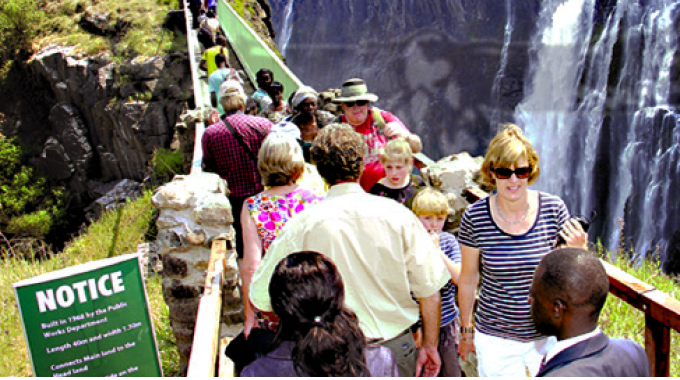[ad_1]
The Herald

The rise in domestic tourism, Zimbabweans visiting Zimbabwean resorts, is providing a solid stream of revenue for many in the hospitality industry and creating new business opportunities for those who have both the skills and the right product for the market.
At one stage, a lot of support as Zimbabwe moved out of Covid-19 lockdowns was from the large business sectors, the conferences, seminars and the like at major hotels with conference facilities.
Many major firms, plus the big trade associations, like to have their annual meetings and special sessions away from the big cities, so that those attending are attending, and not continually sneaking off to work.
Many of the facilities and the sort of services wanted in this market are close to what the same hotels and centres need to offer outside tourists, so the readiness of the rest of the Zimbabwe business sectors to rally round the hospitality sector was appreciated, and needed until international travel started returning to normal.
But there is now another market, Zimbabwean families and couples going on holiday and the welcome rise in this particular market was seen over the festive season when business travel is rare so any increase in numbers comes from holidaymakers, not business people.
Average occupancy rates at hotels reached 55 percent during this season and in resort areas touched 98 percent, basically totally full. Some of this would be international travel, but a lot the industry says is from Zimbabweans.
This growth in local tourism needs to be nurtured and built up. There was a time when few Zimbabweans visited their own resorts, any travel being largely to visit relatives, which is all very well, but hardly lets Zimbabweans see some of the glories of their own country.
Affordability and transport hitches were also factors, but as incomes rise and car ownership expands these limits are overcome.
The hospitality industry needs to work out carefully what can be offered at fair prices.
There are some very well-off Zimbabweans who can cope with the rates set by luxury hotels with global markets, but they will hardly crowd the resort areas.
There are a growing number of middle-income Zimbabweans and their immediate families who are looking for a treat, a good holiday or a day out or a weekend off.
So here are opportunities that can be seized. Family travellers are not necessarily looking for the sort of luxury that a business executive desires, and that is another market.
But the family person needs respectable accommodation in clean surroundings without any dubious hangers on.
We have all seen after the hyperinflation bust the way some formerly respectable small hotels and lodges either closed or moved into a different sort of market catering for instant couples wanting a place for tryst, and that sort of market cannot really cater for families wanting a holiday or a treat.
Harare itself is a growing source of potential customers for the right sort of resort and package. The metropolitan area is large, with a huge population and very urbanised.
It is now almost impossible to see natural countryside, or wildlife in natural surroundings, or even just to sit and enjoy the view while having a picnic.
Some conservation minded people near Harare now do provide attractions, and manage to use their day-trippers as a useful source of revenue to maintain the natural surroundings, or look after the wildlife they are conserving.
Some go a bit further and offer extras, like boat trips or even compatible entertainment, especially for families. This should be a growing trend, especially as there are limits over how much one hospitality centre can offer and still remain natural.
There are a lot of other attractions around Zimbabwe and perhaps the old jokes will come true, that most people will visit Great Zimbabwe or Victoria Falls twice in their lives, once as a child and once when they take their own children.
But in some ways that is how it should be with the areas around this sort of attraction benefiting from the central draw by offering a lot more holiday scenic vistas and activities in the same area that are not connected with the main drawcard.
There possibly needs to be more group marketing for various areas. While businesses are in some ways in competition, they also need to co-operate.
Someone going to Masvingo to see Great Zimbabwe is unlikely to spend a day driving there, a day looking at the ancient city and a day driving back.
They will want to see and do a lot more and joint marketing can probably create the websites and brochures that will keep the visitor around for a week.
The competition may well be on where they stay, but hardly on where they go and what they do and even how they spend their money. It is here that people need to have all the attractions listed carefully in one place so they can have a good holiday.
And the more families who come to a resort area and its surroundings for a good holiday, rather than perhaps just a couple of days, the more business there is for everyone.
We already have the basis now for a good domestic tourism industry, and that must be built up.
We keep hearing about Vision 2030, the target that Zimbabwe will be an upper-middle income country by 2030.
For the tourism and hospitality industry that means a lot more middle income and upper middle income people will be around, and they will have some money to spend on holidays and family treats.
Those who offer the right holidays and attractions at the right prices, and this will vary, will be the ones with a long-term and growing business.
[ad_2]
Source link








